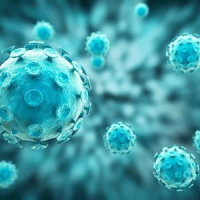Biodistribution and Shedding of AAV Vectors
互联网
848
Determining the AAV vector biodistribution and shedding is central for the safety assessment of proposed early-phase clinical trials. It is especially crucial in the case of AAV vectors since they are injected directly in situ with no possibility of an intermediate ex vivo step, such as in retroviral-mediated approaches. This sole administration mode, the high capsid diversity (natural and chimeric), the various routes of delivery (e.g., intramuscular, intravenous, intra-arterial, and intracranial) make biodistribution and shedding studies a major investigational field for several years ahead. Indeed, the ideal scenario whereby they become generic is less likely to occur as long as the engineered capsid, the therapeutic strategies (expression of cDNA versus oligonucleotides for exon skipping), and the mode of delivery continue to evolve quickly to clinical translational strategies.
An important aspect of biodistribution and shedding studies is that they practically should not be performed on a “research” mode but rather within the frame of the regulatory animal pharmacology and toxicology studies in order to directly implement the Investigational New Drug (IND) application. Yet, if biodistribution and shedding in animal models are explored at an early research stage, i.e., to investigate whether a given AAV serotype administered in a given way transduces certain immunocompetent cells (how does the vector distribute itself in the immune system and with what kinetic?), it is advisable to use an AAV vector manufactured and quality controlled similarly to what will be done ultimately at the clinical stage.
This chapter provides protocols and recommendations to study how an AAV vector distributes and sheds after administration. We discuss (1) the requirements for a rigorous methodology; (2) avoiding nucleic acid cross contamination; (3) systematically assessing the assay sensitivity, specificity, and reproducibility because milieus can be drastically different, i.e., feces versus urine; and (4) choosing the appropriate animal model(s) when anticipating the regulatory pharmacological/toxicological studies.







